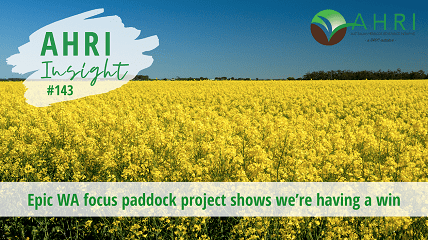
EVERY parent knows that we simply can’t have favourites. We must love each of our children equally.
We at the Australian Herbicide Resistance Initiative (AHRI) shouldn’t have favourites. We love all weeds research papers equally, but this paper is perhaps a little more equal!
It is the work of Martin Harries from Western Australia’s Department of Primary Industries and Regional Development (DPIRD) involving a six-year focus paddock survey with data from 184 paddocks spanning 14 million hectares of cropping land in WA, made possible with GRDC investment.
Martin has recently published the weeds aspect of this research as part of his PhD and reported that we’re having a win with weed control in Western Australia.
It was found that 72 per cent of cropping paddocks had fewer than 10 grass weeds/m2 at anthesis, regardless of herbicide resistance status. Martin concluded that in the majority of cases people are effectively managing weeds despite high levels of resistance by using a diverse range of tactics. He also noted that land use has changed in order to manage resistant weeds with less pasture, and quality of pastures has dropped, as well as fewer legumes and more canola.
We shouldn’t have favourites, but we are in awe of the massive effort put in my Martin with the help from Ken Flower and others at the University of Western Australia to not only monitor so many paddocks for six years, but also the great results showing that our farmers are managing resistant weeds while increasing crop area.

DPIRD grains researcher and PhD candidate, Martin Harries.
The study
Western Australia, six years of survey data from 2010 to 2015 from 184 paddocks spanning 14 million hectares of cropping land. This totals 1104 paddock years of data; however, data was not acquired from every paddock every year.
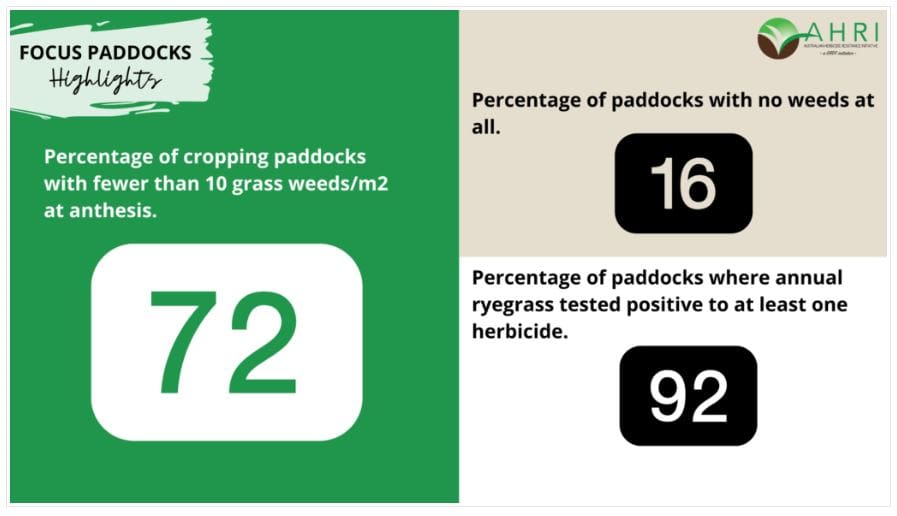
The chart below shows that there is only a small percentage of paddocks with high weed numbers and there is no particular crop type with high weed numbers. Canola appears to be the standout crop with the highest percentage of paddocks with zero grass weeds present.
It appears that pasture has high weed numbers but it depends on your definition of a weed. We say that a weed is a plant out of place, and many of the “weeds” in pastures are actually considered to be stock feed.
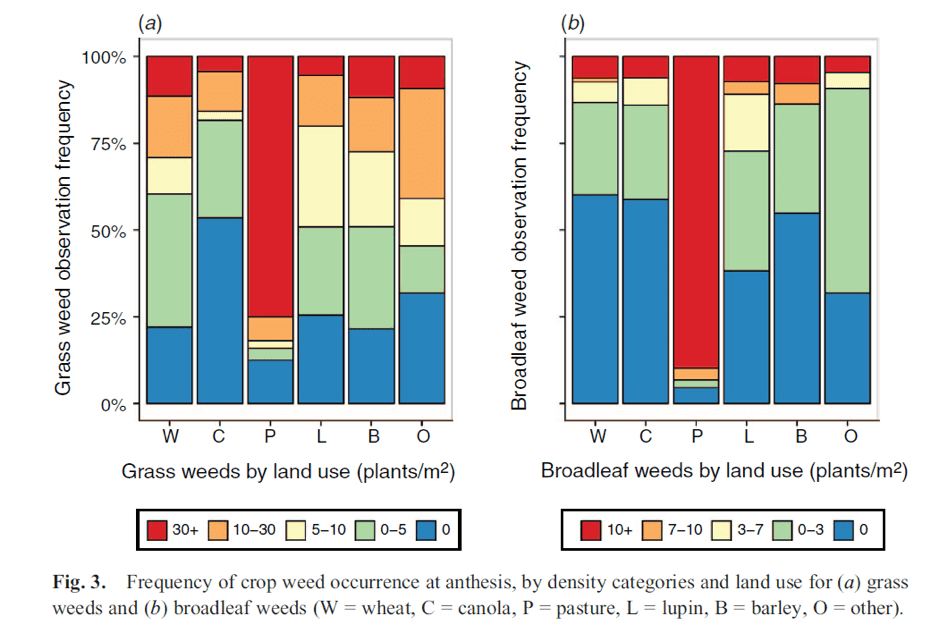
Herbicide use
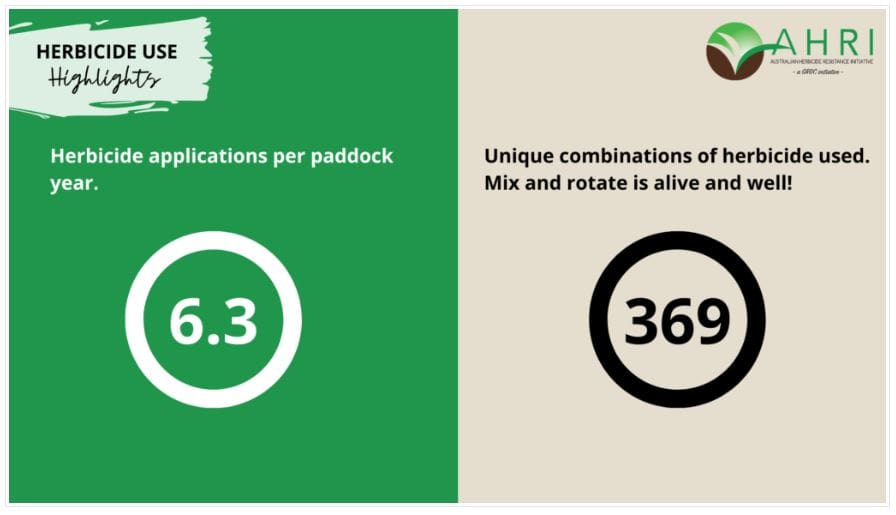
The chart below represents 614 paddock years of herbicide use data from 2010 to 2014. There were no surprises that glyphosate was the most frequently used herbicide with pretty much every paddock receiving a shot of glyphosate every year. Possibly the most concerning data from this survey is that 45% of glyphosate application to canola was applied as a single active. This represents a resistance risk for a range of weed species.
Trifluralin use is also very high and we must remember that at the time there were fewer other pre-emergent herbicide options than we have now. Trifluralin is now commonly used in a mix with other pre-emergent, soil residual herbicides.
We were perhaps a little surprised to see how much Triasulfuron was used as there is widespread resistance to ALS, group B herbicides. However, we postulate that much of this is applied to control volunteer canola and legumes.
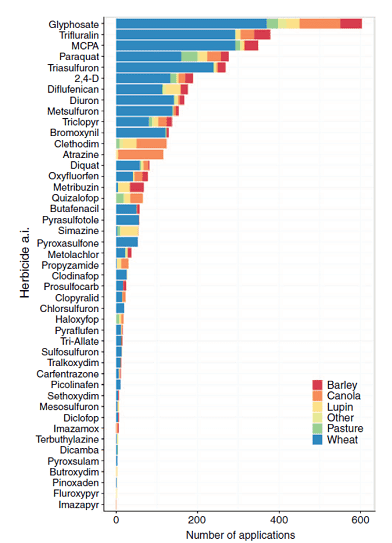
IWM Index
One of the great initiatives of this paper was the creation of the Integrated Weed Management Index (IWMI). This was used to compare the level of diverse weed control tactics between 528 paddock years. To do so they tallied the IWM practices used in each paddock year using the control values in the table below that were derived from the AHRI computer model, RIM.
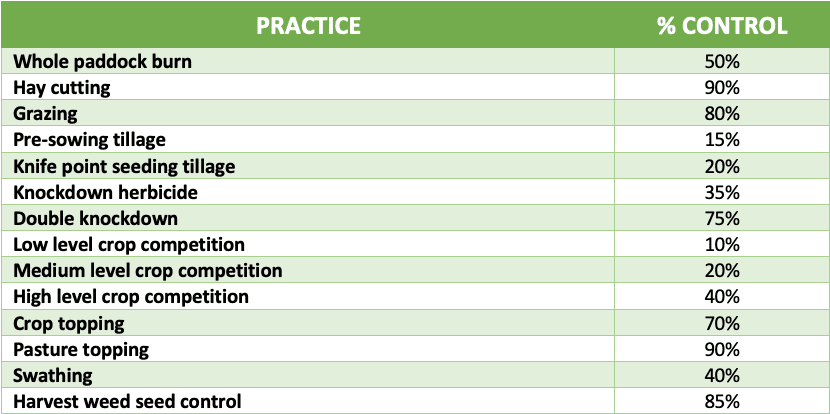
Martin and the team then correlated IWMI with grass weeds in crop, presented in the chart below.
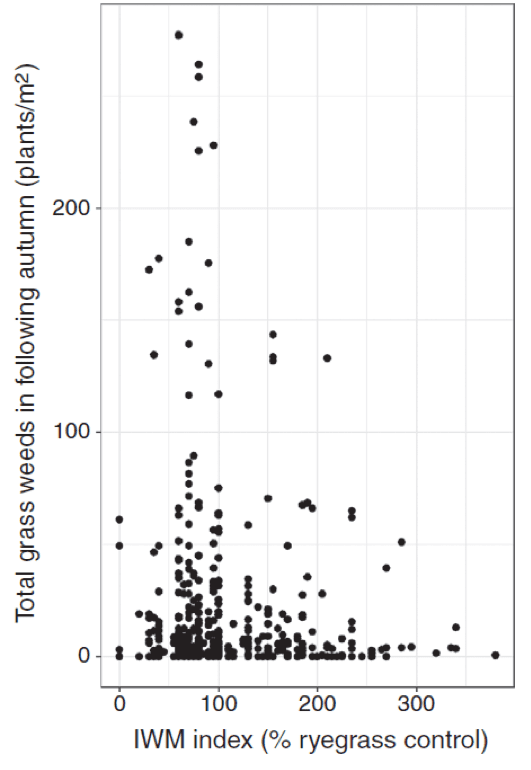
There may not be a statistical correlation (Chi-square analysis) but there is a lot we can learn from this chart
- It’s possible to have zero grass weeds in a crop regardless of the IWMI. This may be due to the crop type having excellent herbicide options (e.g. Canola) or perhaps the farmer had run the seed bank down using diverse tactics in the past.
- Only paddocks with a low IWMI (<100) had high grass weed numbers in crop (>150)
- All paddocks with high IWMI (>250) had fewer than 50 grass weeds in crop.
It’s possible to grow clean crops without using diverse weed control tactics, however it is also true that growers who are using a diverse range of tactics are having a win.
There were also differences in IWM index between regions of Western Australia. Historically, the northern region of WA was first to have big problems with herbicide resistance and perhaps this is the reason for this region using a more diverse range of weed control tactics.

IWM practices
This study also identified which were the most common IWM practices being used by Western Australian grain growers between 2010 and 2015 outlined in the table below.
Stopping weed seed set with crop topping, pasture topping or swathing was the most commonly used practice.
Harvest weed seed control appears lower than previous surveys have indicated, however we must keep in mind that this data is for paddock years whereas previous surveys asked growers if they were using the practice on their farm. Given that back in 2010 to 2015 the main HWSC practice was narrow windrow burning, most farmers only used this over a percentage of their farm in suitable crop types.
The measure of crop competition in this study simply gave crop plant density a rating of low, medium or high. It appears that most growers are achieving high crop plant density in terms of competition with weeds which is very positive. However, this study did not measure other crop competition factors such as row spacing, orientation or cultivar.
The highest levels of seed set control were in lupin, canola and pastures.

No correlation between ryegrass numbers and resistance level
When cumulative ryegrass numbers were plotted against mean ryegrass survival (MS%) from resistance testing, Martin found no correlation. In other words, paddocks with the highest levels of herbicide resistance were not necessarily the weediest. This is great news as it shows that our farmers are managing to beat resistant weeds with clever weed management.
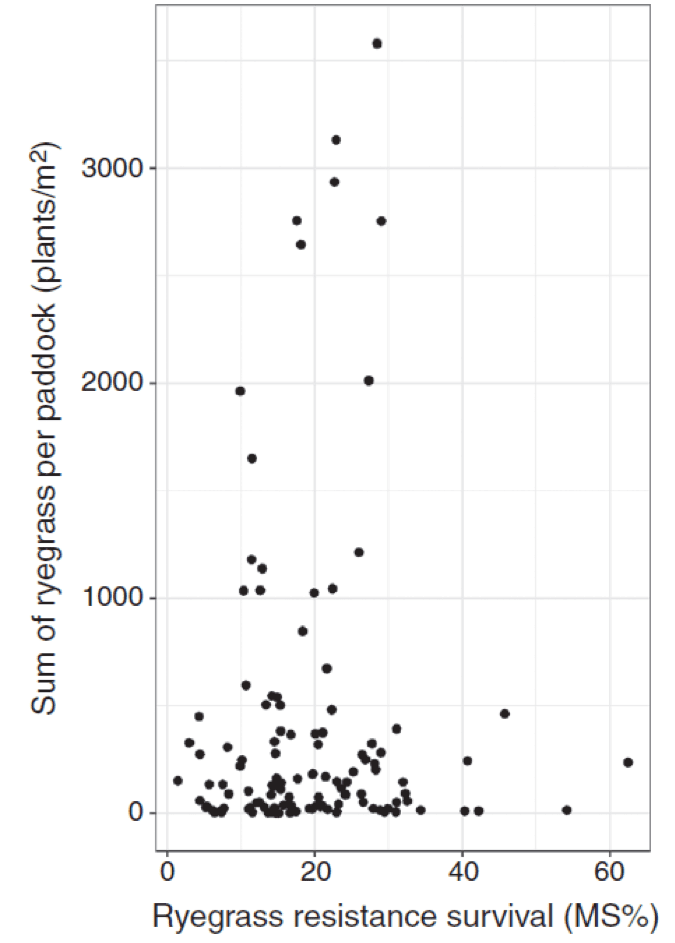
Summary
We are having a win with weed management in Western Australia and we have achieved this while maintaining or increasing crop area. Many years ago, we felt that herbicide resistance would be a threat to grain cropping and we would need to reduce our crop area to manage the weed seed bank. We know that the job isn’t done, and weed control will continue to be a challenge, but the results from this study are a great pat on the back for farmers, agronomists and researchers alike.
Source: AHRI

HAVE YOUR SAY